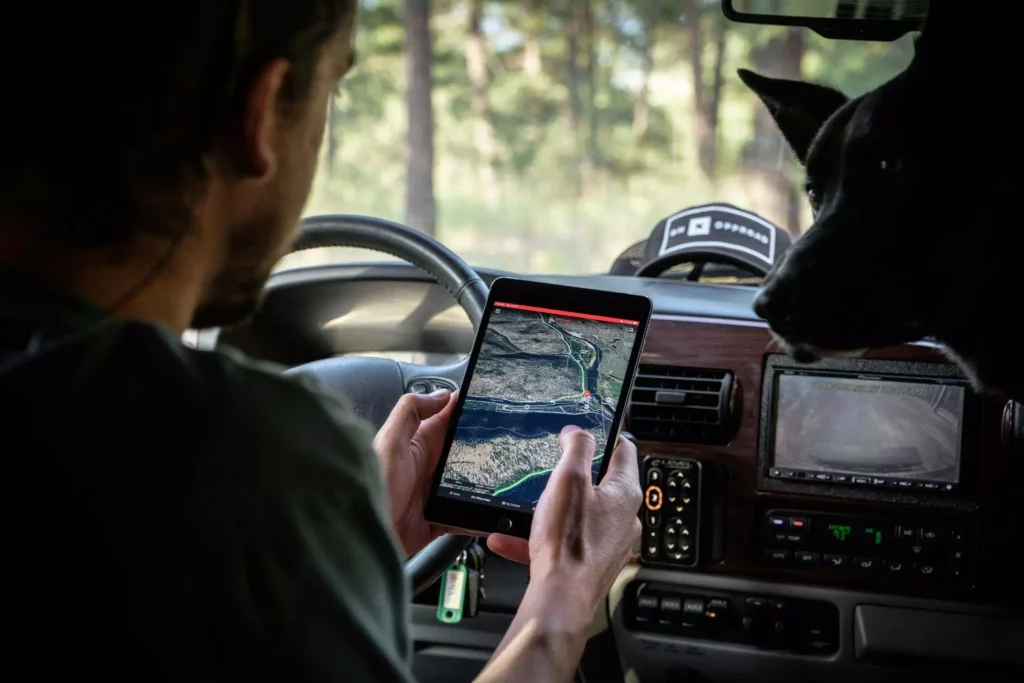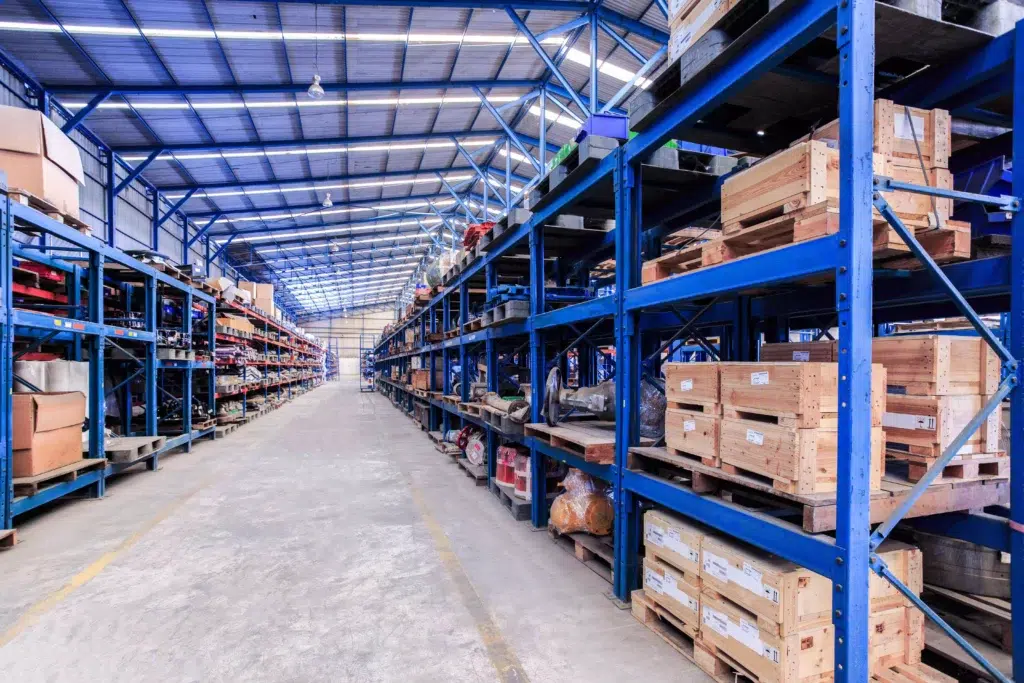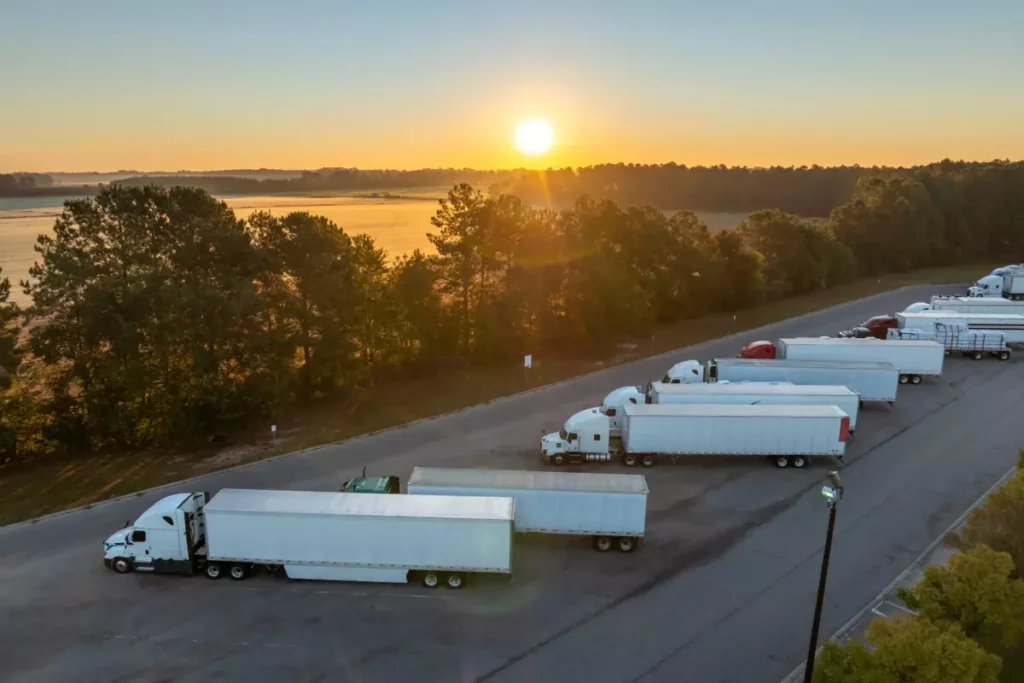The last mile delivery experience has become the ultimate battleground for customer satisfaction. While logistics providers focus on operational efficiency, customers are asking one simple question:
“Where is my delivery?” The way you answer that question and communicate the information can strengthen or weaken customer relationships in a highly competitive marketplace.
Understanding what customers truly want from delivery tracking goes beyond choosing between ETA notifications and live delivery maps. It involves recognizing that customers have different needs, and the most successful logistics companies are those that offer flexibility in how they provide real-time delivery updates.
The Demand for Delivery Transparency Has Changed
What customers expect from delivery updates has evolved rapidly. Visibility now serves as a core part of the delivery experience. As digital-first experiences reshape behavior, logistics providers are adapting to meet a new standard of real-time communication.
How Expectations Have Shifted Post-Amazon
The phrase “out for delivery” used to be sufficient. Customers would wait patiently at home, checking their mailbox periodically, accepting that deliveries could arrive anywhere within an 8-hour window. Those days are gone forever.
Amazon’s Prime delivery service fundamentally rewired customer delivery expectations.
When customers can track a package from warehouse to doorstep in real-time, and receive updates every step of the way, that level of transparency becomes the new baseline and no longer the exception.
According to recent industry data, 91% of consumers now actively track their deliveries, as reported by BusinessWire. This shift means that delivery visibility isn’t a nice-to-have feature; it’s a business necessity.
What Today’s Customers Expect

Modern customers demand three core elements from their delivery experience. They expect accurate timing, with delivery windows that reflect real conditions rather than broad 4-to-6-hour estimates.
Customers now value proactive communication, including updates about delays, route changes, or delivery attempts before they need to ask. They also want reduced uncertainty through clear information about where their package is and when it will arrive.
These expectations extend beyond B2C deliveries. Business customers receiving critical supplies, medical equipment, or time-sensitive materials have even higher stakes when it comes to delivery transparency.
What Is ETA-Based Tracking?
ETA-based tracking provides customers with a clear, time-specific view of when their delivery will arrive. Rather than offering vague status updates, it delivers precise estimates based on real-time data, improving both visibility and confidence in the delivery process.
How ETA Notifications Work
ETA notifications use sophisticated algorithms that factor in multiple variables to predict delivery arrival times. These systems analyze:
- Current driver location and remaining distance.
- Historical traffic patterns for specific routes and times.
- Weather conditions that might impact delivery speed.
- Driver break schedules and Hours of Service regulations.
- Average delivery times for similar stops.
The system then generates estimated arrival windows, typically ranging from 15-30 minutes, and communicates these to customers via SMS, email, or mobile app notifications.
Pros of ETA Tracking
The appeal of ETA-based tracking lies in its simplicity and effectiveness:
Reduces WISMO calls: “Where Is My Order” inquiries can account for up to 40% of customer service volume. Clear ETA communication eliminates most of these calls.
Non-intrusive experience: Customers receive the information they need without having to actively monitor their delivery’s progress.
Builds planning confidence: Accurate time windows allow customers to schedule their day around deliveries, improving first-attempt success rates.
Lower bandwidth requirements: ETA systems require minimal data usage compared to continuous GPS tracking, making them accessible to all customers regardless of their internet connectivity.
Limitations of ETA Tracking
However, ETA notifications have inherent limitations that can impact customer satisfaction:
Static information: Once an ETA is sent, customers may not receive updates if delays occur, leaving them waiting without current information.
Less transparency: Customers can’t see actual progress, which may create anxiety, especially for high-value or time-sensitive deliveries.
Limited problem resolution: If something goes wrong during delivery, customers have no visibility into the situation until they receive an update or miss their delivery window.
What Is Live Map Tracking?

Live delivery maps provide customers with a real-time view of their driver’s location, typically displayed as a moving dot on an interactive map.
These systems update every 30 to 60 seconds, showing the driver’s current GPS coordinates, the estimated route to the delivery address, real-time traffic conditions affecting the delivery, and the number of stops remaining before the customer’s delivery.
Advanced live map systems also overlay additional information such as delivery sequence numbers, driver contact options, and dynamic ETA updates based on the driver’s current location.
Pros of Live Tracking
Live map tracking delivers several customer experience advantages:
Complete visibility: Customers can see exactly where their driver is and make informed decisions about their availability.
Reduced delivery anxiety: The ability to watch progress in real-time eliminates the stress of wondering “where is my package?”
Better coordination: Customers can time their availability perfectly, improving first-attempt delivery success rates.
Enhanced trust: Transparency builds confidence in the delivery process and the company providing it.
Limitations of Live Map Tracking
Despite its appeal, live map tracking isn’t perfect for every situation:
Potential overwhelm: Some customers find constant tracking stressful or unnecessary, preferring simpler notification methods.
Privacy concerns: Detailed driver tracking raises questions about surveillance and data privacy that some customers find uncomfortable.
Technology barriers: Older customers or those with limited smartphone access may struggle to use live map interfaces effectively.
Battery and data usage: Continuous GPS tracking can drain mobile device batteries and consume significant data allowances.
What Do Customers Actually Want?
Delivery tracking is not one-size-fits-all. Customers engage with updates in different ways, depending on their expectations, habits, and comfort with technology. Understanding these differences helps logistics providers tailor the delivery experience to meet the needs of each audience.
Different Preferences by Demographic
Customer preferences for delivery tracking vary significantly across demographic lines:
Millennials and Gen Z (ages 18-40) overwhelmingly prefer live map tracking. This demographic grew up with smartphones and expects real-time information in all aspects of their lives. They’re comfortable with technology and often check their delivery status multiple times throughout the day.
Gen X customers (ages 41-55) show mixed preferences, often depending on the delivery context. They appreciate live tracking for important deliveries but may prefer simple ETA notifications for routine purchases.
Baby Boomers (ages 56+) typically favor straightforward ETA notifications. They value accuracy over complexity and prefer phone calls or text messages over app-based tracking systems.
Delivery Context Matters
The type of delivery significantly impacts customer preferences for tracking methods:
Time-sensitive deliveries: Medical supplies, perishable goods, and business-critical items almost always warrant live tracking, regardless of customer demographic.
High-value shipments: Expensive electronics, jewelry, or important documents create customer anxiety that live tracking helps alleviate.
Urban vs. rural deliveries: City customers often prefer live tracking to coordinate around busy schedules, while rural customers may prioritize accurate arrival windows over real-time location data.
Business vs. personal deliveries: B2B customers frequently need live tracking to coordinate receiving staff, while personal deliveries might only require ETA notifications.
Control and Communication Are Key

The most important insight from customer research is that people want control over their delivery experience. This means:
- Choice in communication method: Some prefer texts, others want app notifications, and many want email confirmations.
- Control over delivery timing: Options to reschedule, redirect, or provide special instructions.
- Transparency about delays: Honest, proactive communication when things don’t go according to plan.
Trust develops when customers feel informed and empowered to make decisions about their deliveries.
Why Smart Delivery Companies Offer Both
Customer expectations are diverse, and a single tracking method rarely satisfies everyone. By offering flexible options, logistics providers can meet a wider range of needs while creating a more personalized and responsive delivery experience.
Hybrid Tracking Experience
Leading logistics companies recognize that the choice between live maps and ETA notifications is a false dilemma. The smartest approach is offering both options and letting customers choose their preferred experience.
A hybrid tracking system might offer default ETA notifications for all customers, while giving them the option to upgrade to live tracking when desired. It can include context-sensitive recommendations that suggest live tracking for time-sensitive deliveries, ensuring greater visibility when it matters most.
Over time, the system can learn from individual customer behavior to tailor the experience based on preferences. Additionally, it allows seamless switching between notification types during the delivery process, giving customers more control without sacrificing convenience.
CIGO Tracker’s Flexible Customer Experience
CIGO Tracker’s last mile delivery experience platform exemplifies this flexible approach. Our system automatically provides:
- Customizable customer notifications that can include ETA updates, live map links, or both.
- Multiple communication channels including SMS, email, and branded mobile experiences.
- Dynamic delivery windows that update in real-time as conditions change.
- Customer preference management allowing end users to set their preferred tracking method.
This flexibility means logistics providers can serve diverse customer bases without forcing a one-size-fits-all solution. A single delivery route might include customers receiving simple text updates while others actively track their delivery on a live map—all powered by the same underlying system.
Real Business Benefits of Offering Delivery Visibility

Providing customers with real-time tracking does more than improve the delivery experience. It creates measurable business outcomes. Delivery transparency enhances operational efficiency, strengthens customer relationships, and drives long-term growth across key areas of logistics.
Fewer Support Calls
Companies that implement comprehensive delivery tracking see immediate reductions in customer service volume:
- 30-50% reduction in “Where is my order?” inquiries.
- Decreased call duration for remaining support interactions.
- Improved customer service efficiency as agents can focus on solving real problems rather than providing status updates.
Higher Satisfaction Scores
Delivery transparency directly correlates with customer satisfaction metrics:
- 15-25% improvement in Net Promoter Scores (NPS) among companies offering real-time tracking.
- Higher first-attempt delivery success rates due to better customer coordination.
- Reduced delivery complaints about missed deliveries or poor communication
Stronger Brand Loyalty
Customers who have positive delivery experiences become long-term advocates:
- 40% higher retention rates for customers who rate their delivery experience as “excellent”.
- Increased order frequency among customers who trust the delivery process.
- Positive word-of-mouth marketing that drives organic customer acquisition.
How Can Flexible Tracking Options Transform Your Customer
The debate between live maps and ETA notifications misses the fundamental point: customers want control, not just information. The most successful logistics companies provide flexible delivery tracking options that adapt to customer preferences and delivery contexts.
Real-time delivery updates go beyond technology. They focus on building trust through transparency and empowering customers to manage their own delivery experience. This could mean watching a driver approach on a live map or receiving a simple text with an accurate arrival window. In both cases, the result is the same: confident, satisfied customers who have a clear understanding of what to expect.
CIGO Tracker delivers both live delivery map functionality and flexible ETA notifications, helping logistics teams provide a modern, customer-first experience that drives satisfaction and operational efficiency. By offering choice rather than forcing a single tracking method, logistics providers can meet diverse customer needs while building the strong relationships that drive long-term business success.
Ready to give your customers the delivery experience they expect? Schedule a demo with CIGO Tracker today and see how flexible, real-time tracking can elevate satisfaction, improve efficiency, and set your logistics operation apart.
Frequently Asked Questions
1. What’s the difference between live map tracking and ETA notifications?
Live map tracking provides a real-time visual of a delivery vehicle’s location on a map, while ETA (Estimated Time of Arrival) notifications give time-based updates (e.g., “Your order will arrive in 20 minutes”) without a visual tracker.
2. Which do customers prefer: live tracking or ETA updates?
Preferences vary, but studies show many customers value predictive accuracy over constant visibility. Clear, timely ETA updates reduce anxiety, while live maps are preferred for high-value or time-sensitive deliveries.
3. Why is delivery visibility important to customers?
Visibility builds trust, reduces “Where is my order?” inquiries, and enhances the delivery experience. Customers want control and clarity, knowing exactly when to expect a delivery helps them plan their day.
4. Are live tracking tools more accurate than ETA notifications?
Not always. A live map shows the current location but doesn’t always predict delivery timing well. Smart ETA systems that factor in traffic, driver behavior, and delivery order often provide more actionable info.
5. Should businesses offer both live tracking and ETA alerts?
Ideally, yes. Offering both gives customers choice and flexibility. Some may prefer periodic ETA updates via SMS or email, while others want full visibility via live tracking, especially for gig-based or food delivery services.
